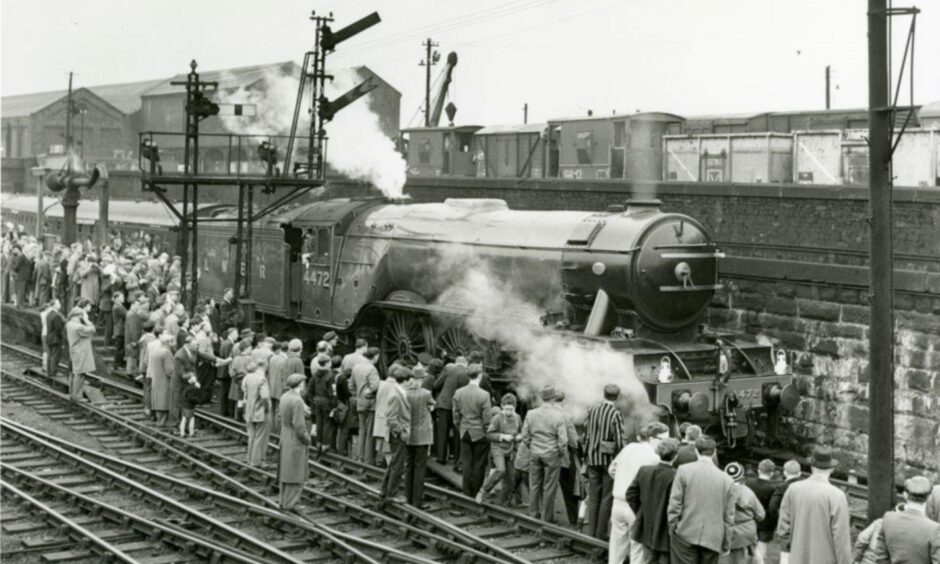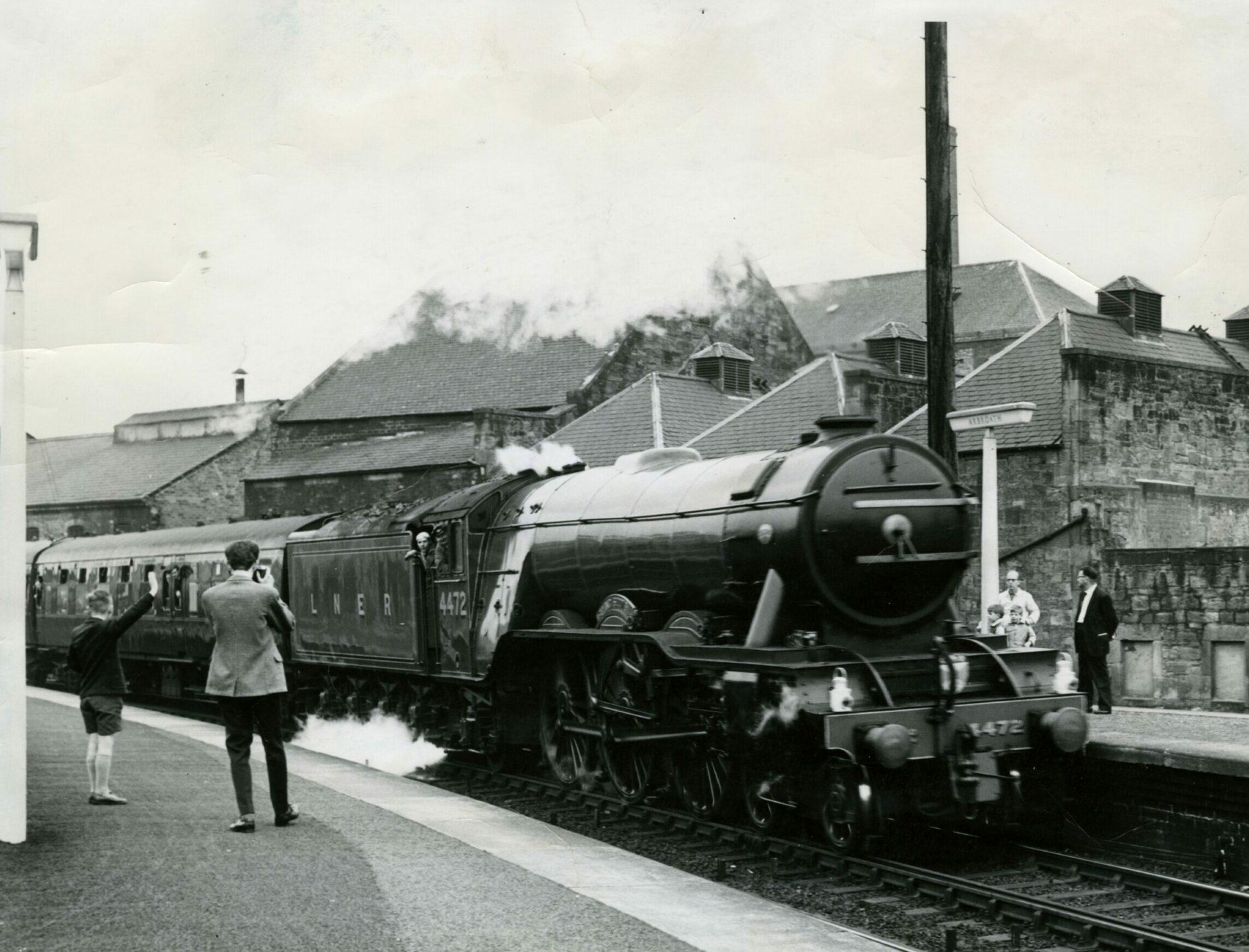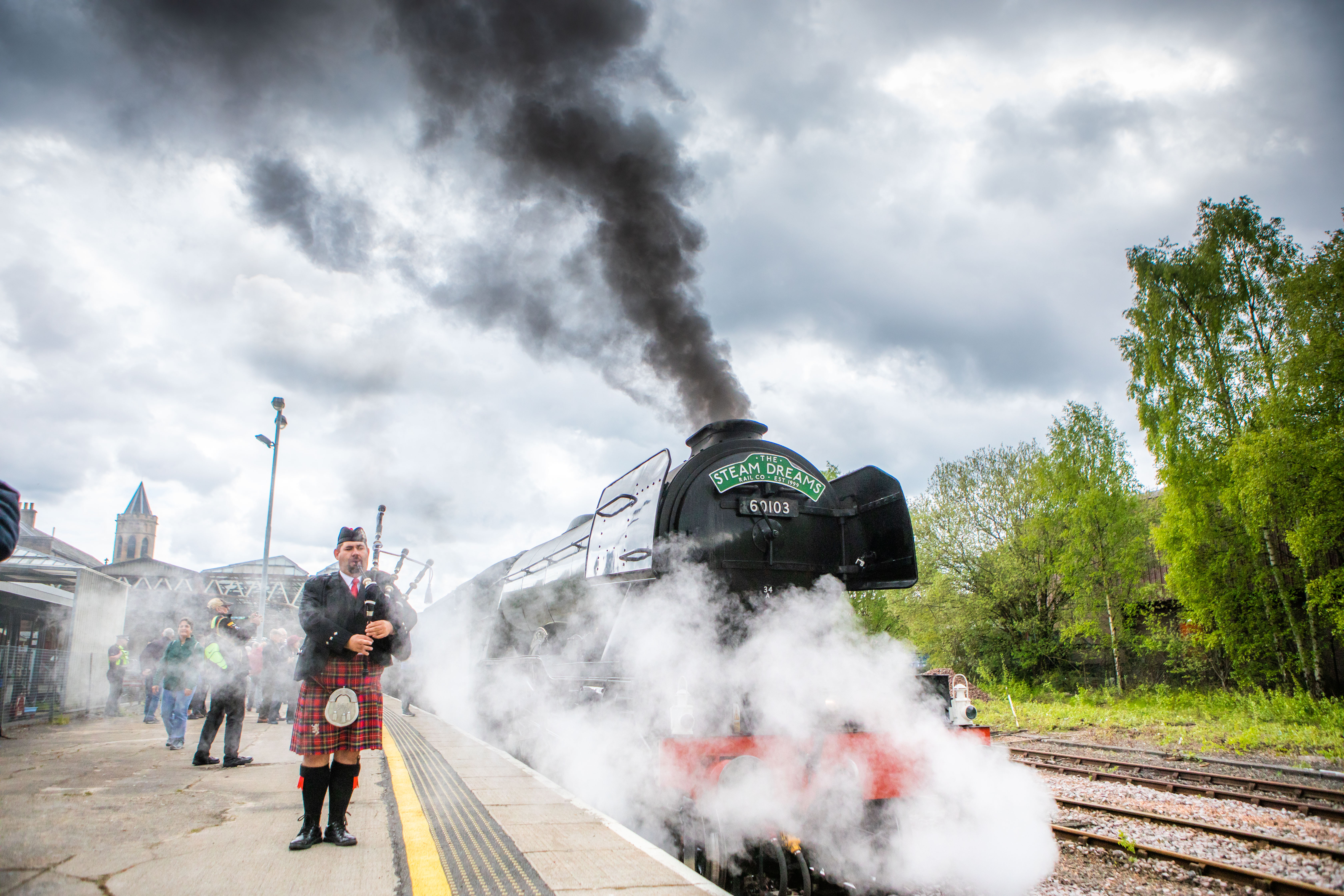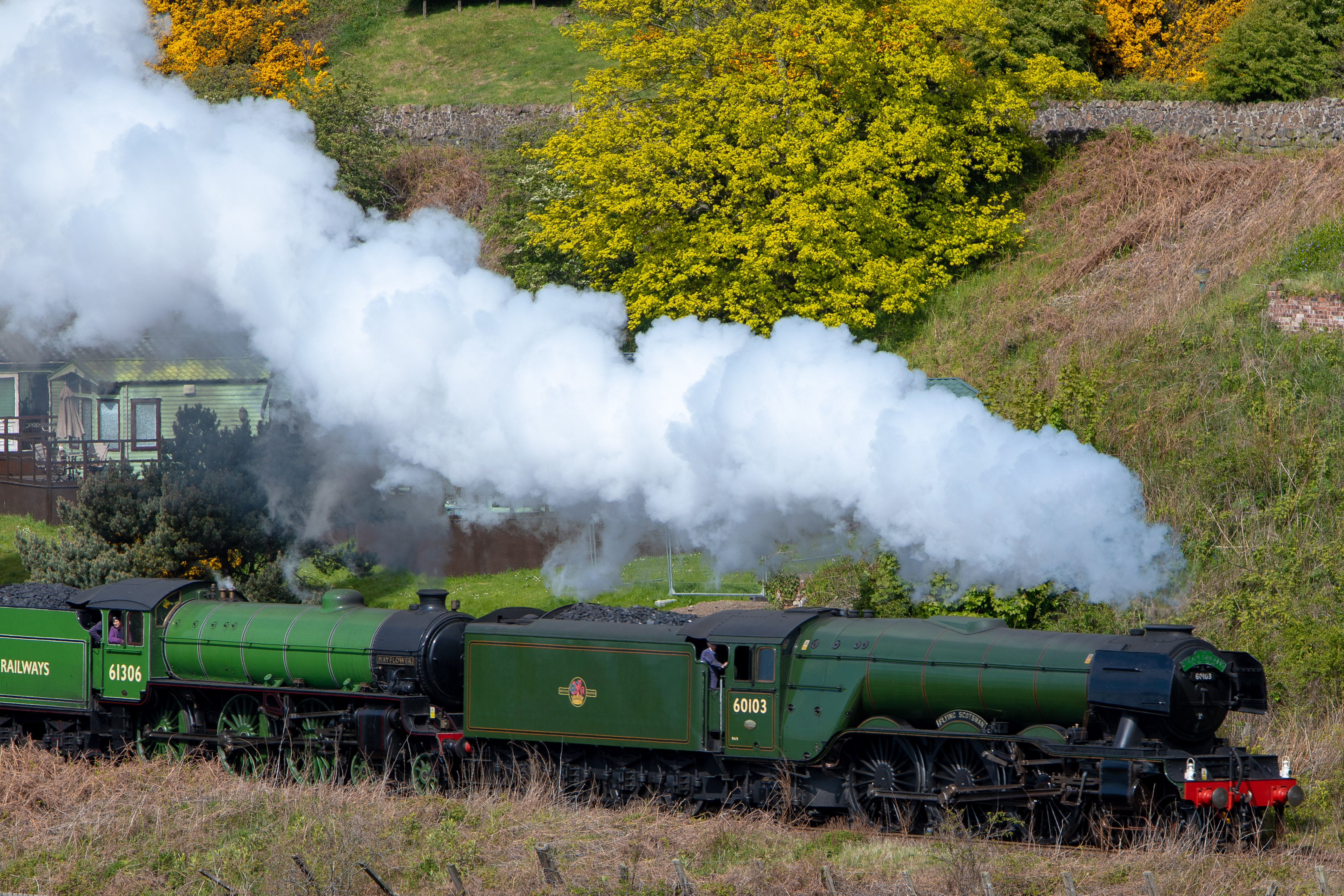
The Flying Scotsman first thundered down the tracks 100 years ago.
The world-famous glistening green, steam machine became a figurehead of modern Britain and inspired many to travel by rail.
As a world-record holder and a movie star, the Flying Scotsman has no shortage of history and will go down in the annuls as the world’s most recognisable locomotive.
In celebration we have taken a look back at the history and legacy of the country’s best loved locomotive, including memories of a famous stop at Tay Bridge Station in 1964.
The Flying Scotsman on our patch
That was the year the Flying Scotsman made its maiden journey north of the Forth Rail Bridge which typically aroused a great deal of interest from the public.
Queen’s College, Dundee, Railway and Transport Society organised the 1964 rail tour which ran from Edinburgh to Aberdeen via Perth and back via Dundee.
Avid train enthusiast, Alec Coupar, was there to witness history in the making.
He said: “I was The Courier’s unofficial railway correspondent at the time, reviewing books and writing wee articles.
“She signifies the best of British, lots of people who knew about the trip came down to see it.”
The train left Edinburgh Waverley early in the morning before travelling through Fife and onto Stanley.
It then proceeded to thunder down the 26-mile stretch of track to the now extinct Forfar and Bridge of Dun stations.
The locomotive was welcomed by masses in Aberdeen then experienced the same applause when heading back south to Dundee, passing Arbroath Railway Station.
Traffic was halted by the amassed crowds, all intent on glimpsing the radiant green of the world-famous locomotive.
He said: “The crowds in the picture speak for themselves, you could never get a crowd like that in Tay Bridge Station nowadays, no chance.
“At the time I was photographing a lot of steam engines because they were all away to be scrapped in favour of the new diesel engines.
“It was her only trip to Dundee but is set to return there later this year on her way up to Aberdeen.”
Alec’s snap of the crowds on the track has become iconic.
The locomotive was originally built in Doncaster for the London and North Eastern Railway as part of the A1 class – the network’s most powerful locomotives.
Built at a cost of £7,944 in 1923 no expense was spared on the railway’s premier transporter.
It is well-known as the first recorded locomotive to travel at 100mph after being clocked during a special test event in 1934.
Named for its record-breaking speed in transporting commuters from London to Edinburgh, the Flying Scotsman became a figurehead of Britain’s modern age.
Over the years it starred in many a motion picture, including the first British-produced ‘talkie’ – The Flying Scotsman, starring Academy Award winner Ray Milland.
But the heyday of the Scotsman fell by the wayside following the climax of the Second World War.
Going off track
Once a symbol of British modernity, its rusting parts and diminishing image saw it ushered out for newer models and it was retired in 1963.
After being purchased by a locomotive sympathiser, who restored the vibrant Doncaster green paintwork, the Scotsman was put into work once more, ferrying hordes of fans on a high-profile tour of the USA before its saviour struck financial ruin in 1973.
From then on the once-adored locomotive sat stagnant, stored at a California army base before being passed from owner to owner, never receiving the true adulation such an icon deserved.
Following such a stint away from public life the Flying Scotsman was thankfully reintroduced to the masses in December 2005.
To the surprise of many the locomotive titan was welcomed back with rapture, leading to the decision to reintroduce the green giant to the tracks, full-time.
A rigorous course of engineering brilliance meant that 10 years on the Flying Scotsman once again took its place within the hearts of the nation.
“There is not much of the original engine left but she’s still trailing up and down the tracks at 100 years old which says a lot,” concluded Alec.
The monumental occasion was celebrated with a surprise visit to Edinburgh station.
Greeted by a whole host of performers the highlight of the event came when poet laureate Simon Armitage read aloud a poem dedicated to the Flying Scotsman.
In his prose he referred to its “vast steel circumferences” and “rippling bodywork pouring with sweat,” painting a fitting picture of the icon.
A recent BB2 documentary on the career of the Flying Scotsman showed clips of the great locomotive crossing the Forth Bridge in 1964.
As well as former royal painter Terence Cuneo painting the Flying Scotsman on the Forth Bridge.
Now a working exhibit at The National Railway Museum in York, visitors can go and take a scenic trip on the national symbol once more.















Conversation